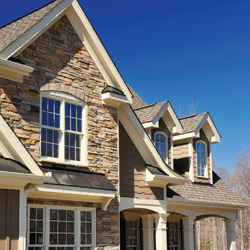Tracking the Housing Market

The Peoria area has not followed the national trend at any point in the downturn, and there is some doubt that we will follow it in the recovery.
It’s better here, central Illinois. That was the major focus of a feel-good, regional advertising campaign created in the second half of 2008. When the campaign began, it really was better here. Then the announcements of Caterpillar early retirement incentives and subsequent layoffs hit the Peoria area like a tsunami. Retail sales started to report negative numbers. Some area businesses folded. And, the housing market was on edge after 15 years of stable home sales. After all, Peoria has been known nationally for consistently “bucking the national trend” when communities all over the country were experiencing a seldom-used word, foreclosure.
The first quarter of 2009 saw home sales decrease due to the delay in the government’s implementation of the first-time homebuyer tax credit. As Realtors weathered the unusual circumstances of a down market, the tax credit started to take hold and first-time buyers started to dominate the housing market. As part of the government’s stimulus package, a new homeowner could qualify for a tax credit of up to $8,000 if the home was purchased by December 1, 2009. Homes in the $100,000 to $150,000 price range would be in demand for the rest of the year.
Home sales in the second quarter were up by 38 percent over the first quarter as the housing market recorded its sixth consecutive monthly increase for 2009. The fear that the real estate market would mirror what was happening in other parts of the country just didn’t happen. Interest rates hovered around five percent for a 30-year fixed loan, which was more than a point below the 6.25 percent rate for the same period the year before. The median sale price for a home in the Peoria area was $119,000, compared to a statewide median of $160,000. If you were a first-time homebuyer, there wasn’t a better time to buy. With historically low interest rates, the tax credit incentive and a good inventory, Peoria was the place to call home.
For years, the local real estate market would report quarterly numbers and compare those numbers to the previous year. For a majority of those years, the news was always positive—so positive that it became hard to spin the housing market story without using the words “steady increase,” “stable economy” and “bucking the national trend.” Even the media would yawn in reporting the story as it repeated the same message quarter after quarter. Leaders for the Peoria Area Association of Realtors were the envy of other associations throughout the country. The Peoria area was so isolated from “the bubble” that devastated cities where loans were given to people who had no business buying a home. The region’s longstanding conservative ways in the mortgage-lending department would keep some foreclosures at bay.
Homes sales and the median sale price showed increases for the third quarter of 2009, but a significant increase was tempered by the unemployment rate, as it continued to hover around 11 percent, a far cry from the previous year’s 5.6 percent. The September jobless rate would be the highest for that month since 1983, when it was over 14 percent and the Peoria housing market was trying to rebound from an all-time low in home sales of 1,239.
There were 1,316 homes sold in the third quarter compared to 1,199 homes sold in the second quarter, an increase of 10 percent. That same number would also indicate a double-digit decrease of 16 percent when compared to the same period a year ago. Fortunately, home values continued to stay strong throughout the year, with the average sale price around $140,000 for the second and third quarters. The median home price increased to $120,000, compared to $117,667 for the same period in 2008.
There’s no argument that the $8,000 tax credit to first-time home buyers kept the Peoria market motivated for three out of the four quarters of the year. The National Association of Realtors estimates that the tax credit contributed approximately $22 billion to the general economy, and that approximately two million people will take advantage of the credit this year. A new bill, passed by Congress and signed into law by the president in November, calls for an extension of the tax credit for first-time home buyers through April 30, 2010. It also creates a tax credit for those who have lived in their homes for at least five years. Those buyers would be eligible for a $6,500 tax credit through April 30, 2010, provided they have lived in the home they are selling, or have sold, as principal residence for five consecutive years of the past eight. If potential home buyers have a binding contract on or before that date, they will have until July 1st to close the transaction. Income limits for eligible homebuyers were expanded to $125,000 for single buyers and $225,000 for couples, and the purchase price of the home cannot exceed $800,000.
Our local housing market probably won’t see large increases in the coming months, as the Peoria region didn’t experience the big fall that plagued many cities throughout the country. We have not followed the national trend at any point in the downturn, and there is some doubt that we will we follow it in the recovery. Traditionally, we are a conservative market, so until people feel confident in their jobs, pending healthcare issues are resolved, and the stock market continues to recover, buyers and sellers will be cautious. That is what has kept us in a very stable market in the past, and we’re confident this will continue in the future.
The Peoria Area Association of Realtors will announce 2009 year-end housing results at the end of January 2010. If the number of pending sales is any indication, the hope is that Peoria will, once again, be able to say, “It’s better here.” iBi

